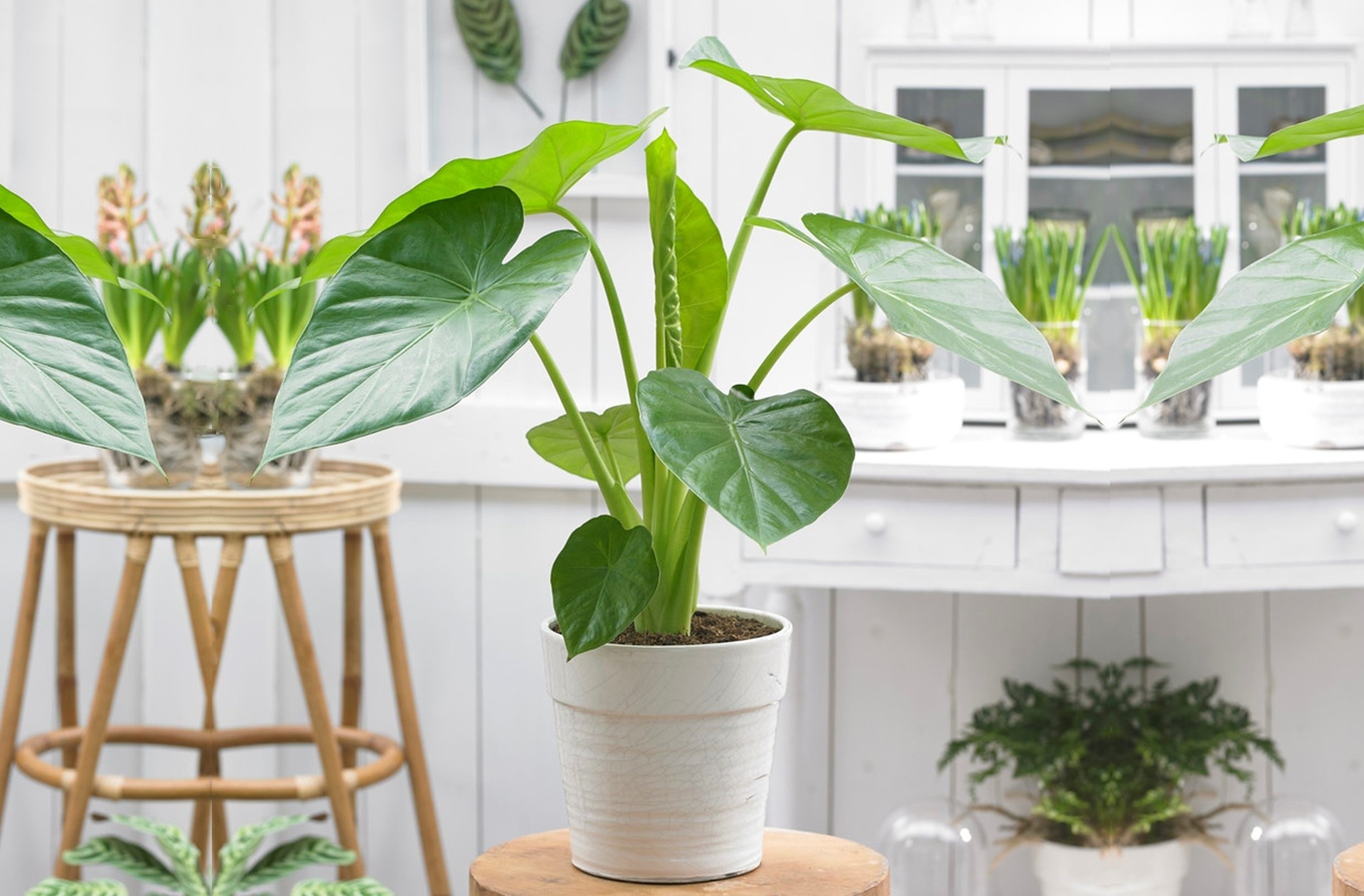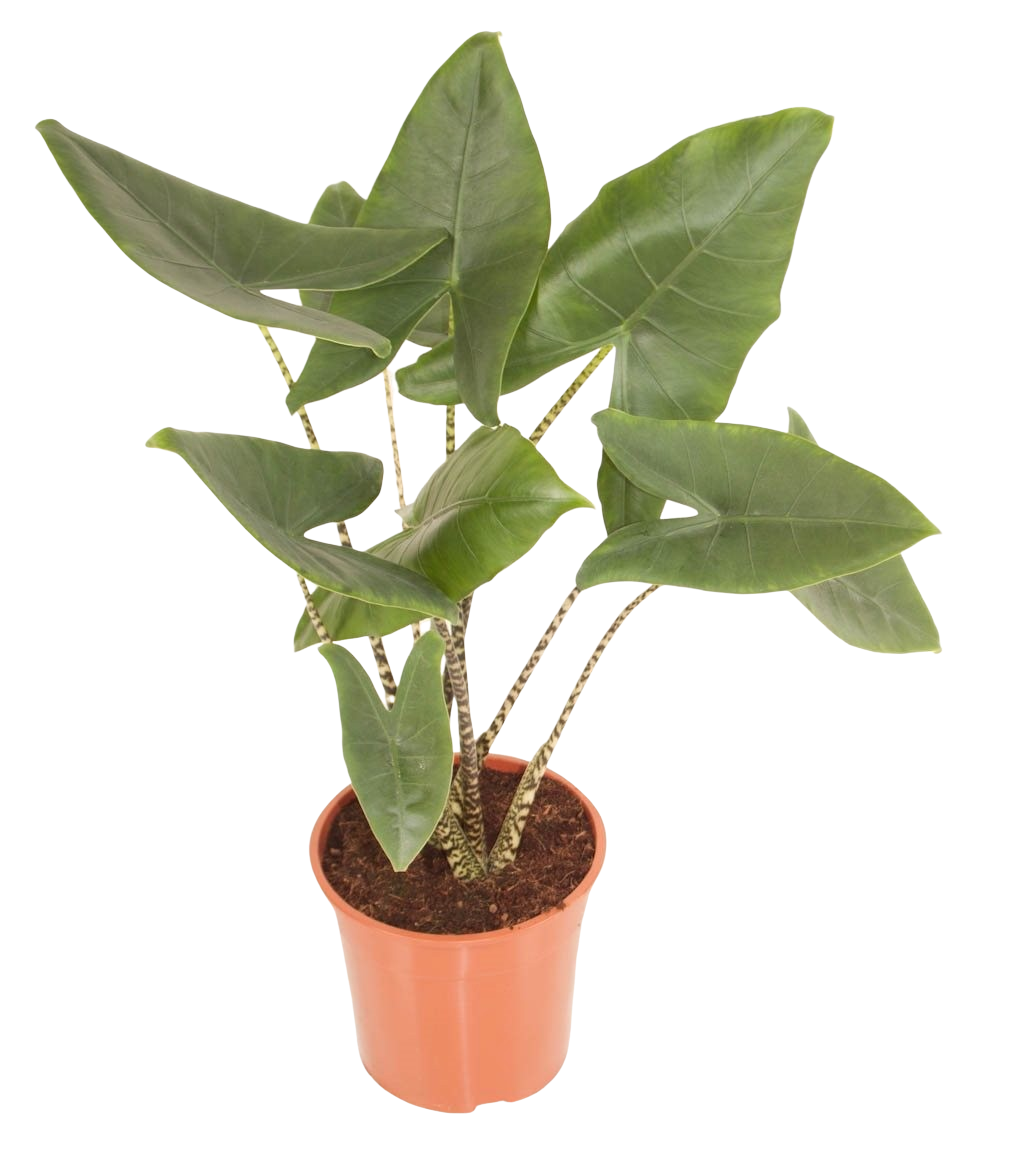
Alocasia Information & tips - Plant Guide
- Water moderately to abundantly, keeping the soil moist but not soggy.
- Indirect sunlight, avoid direct sunlight.
- Good air purifying properties.
- Monthly during the growing season, less in winter.
- Toxic to pets, keep out of reach.
- Every 2-3 years in spring, use well-draining potting soil.

Introduction
Alocasia, known for its striking and exotic appearance, is a genus of plants that has gained immense popularity among plant enthusiasts. With their stunning foliage and unique characteristics, Alocasias are a captivating addition to any plant collection. In this article, we will delve into the essential aspects of caring for Alocasia plants, including their preferred growing conditions, watering requirements, feeding needs, repotting guidelines, and a glimpse into their fascinating origin.
Finding the Perfect Spot: Ideal Conditions for Alocasia
Creating the right environment is crucial to successfully cultivate Alocasia plants. These tropical beauties thrive in warm, humid conditions that mimic their native habitats in Southeast Asia and the Pacific. To replicate their preferred conditions, provide bright, indirect sunlight. Avoid direct sunlight, as it can scorch their delicate leaves. If you're growing Alocasia indoors, place them near a window with filtered light or use sheer curtains to diffuse the sunlight.
Maintaining humidity is also vital for Alocasias. You can achieve this by misting the leaves regularly or using a humidity tray. Aim for a humidity level of at least 60%. If your indoor air is too dry, the plant may benefit from a humidifier placed nearby.
Quenching the Thirst of Alocasia: Watering
Alocasias prefer consistently moist but not waterlogged soil. Keep the soil evenly moist during the growing season, which typically spans from spring through early autumn. However, be cautious not to overwater, as this can lead to root rot. Allow the top inch of soil to dry out between waterings, and ensure the pot has proper drainage to prevent excess water from accumulating.
During the dormant period in late autumn and winter, reduce watering significantly. Alocasias enter a period of rest during this time, and their water requirements decrease. Be sure to adjust your watering schedule accordingly to prevent overhydration.
Nourishing the Elegance: Feeding Alocasia
To maintain their lush foliage and promote healthy growth, Alocasia plants benefit from regular feeding during the growing season. Use a balanced, liquid fertilizer with a diluted strength of about half the recommended dosage. Apply the fertilizer every 4-6 weeks. Avoid fertilizing during the dormant period, as the plant's metabolic activity slows down during this time.
Repotting Alocasia: Creating Space for Growth
As Alocasia plants mature, they may outgrow their containers, and repotting becomes necessary. Typically, you should consider repotting every 1-2 years or when you notice the plant becoming root-bound. Choose a pot that is 2,5 untill 5 cm larger in diameter than the current one and has adequate drainage holes. Use a well-draining potting mix that retains some moisture but allows excess water to escape. Gently remove the plant from its current pot, untangle any circling roots, and place it in the new container. Water thoroughly after repotting to help the plant settle into its new home.
The Enigmatic Origin of Alocasia
The Alocasia genus is native to the tropical rainforests of Southeast Asia and the Pacific Islands. These regions are renowned for their incredible biodiversity, and Alocasia plants are a testament to the lush beauty of these environments.
Alocasias have adapted to thrive in the dense shade of the rainforest floor. Their large, dramatic leaves serve as natural umbrellas, allowing them to capture and funnel rainwater toward their roots. This adaptation not only aids their survival but also makes them incredibly attractive as houseplants.
In some cultures, Alocasia plants hold cultural significance and are used in various rituals and traditions. They are also known by a variety of common names, such as Elephant Ear, due to the shape and size of their leaves.
In conclusion, Alocasia plants are captivating additions to any plant collection, thanks to their exotic beauty and unique characteristics. To ensure their health and vibrancy, provide them with the right conditions, including indirect light, proper humidity, and well-draining soil. Be mindful of their watering and feeding needs, adjusting them according to the seasons. As you care for your Alocasia, remember the lush rainforests of their native habitats, where these plants have evolved to thrive amidst nature's wonders.

